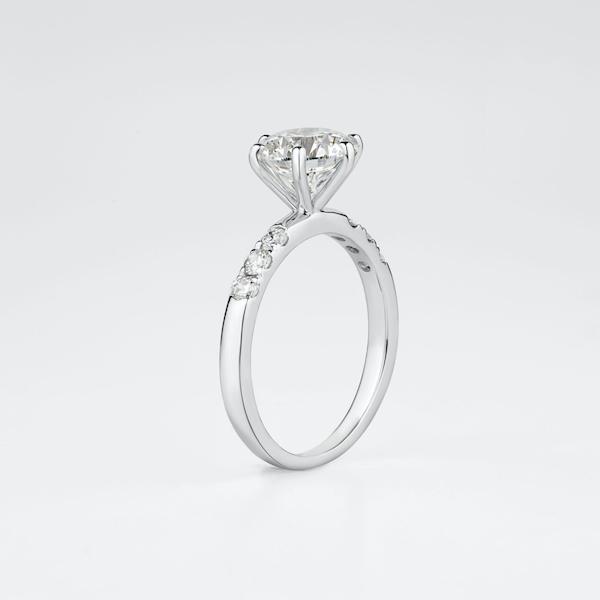Lab-created diamonds are revolutionizing the luxury market by offering a sustainable alternative to traditional mined diamonds. This article explores the process of growing lab-created diamonds, comparing them to natural diamonds, and highlighting their environmental benefits. Additionally, ethical considerations within the diamond industry are examined. Through an objective and informative lens, this article aims to provide a detailed understanding of how lab-created diamonds are redefining luxury with their sustainable attributes.

The Process of Growing Lab-Created Diamonds
The process of growing lab-created diamonds involves creating an environment that mimics the conditions found in the Earth’s mantle. This is made possible through advancements in technology and the market demand for sustainable luxury options. Lab-created diamonds are grown using two main methods: High Pressure High Temperature (HPHT) and Chemical Vapor Deposition (CVD). In the HPHT method, a small diamond seed is placed in a pressure chamber where it is exposed to high temperatures and pressures. Carbon-rich gases are then introduced, allowing carbon atoms to attach to the seed and form a diamond over time. CVD, on the other hand, involves placing a diamond seed in a low-pressure chamber and introducing carbon-rich gases along with other elements. This creates a plasma that deposits carbon atoms onto the seed, resulting in diamond growth layer by layer. These processes require precise control of temperature, pressure, gas composition, and growth time to produce high-quality lab-created diamonds with identical properties to natural diamonds.
Comparing Lab-Created and Natural Diamonds
In comparing lab-created and natural diamonds, it is evident that there are distinct differences in their origins and formation processes. Lab created diamonds are produced in a controlled environment using advanced technology, while natural diamonds are formed deep within the Earth’s mantle over billions of years. This dissimilarity in origin has significant implications for the diamond market trends. The increasing popularity of lab-created diamonds has disrupted the traditional diamond industry, challenging the notion that natural diamonds are the only desirable option. As consumers become more aware of the economic impact of lab-created diamonds, they are increasingly choosing these sustainable alternatives over mined ones. This shift in consumer preference has led to a decrease in demand for natural diamonds and an increase in supply, consequently affecting their market value. The economic implications of this trend cannot be overlooked as lab-created diamonds redefine luxury with sustainability at its core.
Environmental Benefits of Lab-Created Diamonds
One significant advantage of lab-created diamonds is their reduced environmental impact. Lab-created diamonds offer several sustainability advantages over natural diamonds, including a significant reduction in carbon footprint. The process of growing diamonds in a laboratory requires less energy and emits fewer greenhouse gases compared to the mining and extraction of natural diamonds. Additionally, lab-grown diamonds do not require large-scale land disruption or water usage associated with traditional diamond mining operations. Furthermore, lab-created diamonds eliminate the need for harmful chemicals and toxic waste disposal that can result from mining processes. By opting for lab-created diamonds, consumers can contribute to the preservation of natural resources and mitigate the negative environmental effects typically associated with diamond production. This makes lab-created diamonds an attractive choice for those seeking luxury items with a lower environmental impact.
Ethical Considerations in the Diamond Industry
Ethical considerations surrounding the diamond industry necessitate an examination of labor practices, human rights violations, and the role of conflict diamonds in funding armed conflicts. One key aspect of ethical sourcing in the diamond industry is ensuring fair trade practices. Fair trade diamonds are those that have been mined and traded in a manner that promotes social and environmental responsibility. This includes guaranteeing fair wages for workers, safe working conditions, and respect for human rights throughout the supply chain. By supporting fair trade diamonds, consumers can contribute to sustainable development in mining communities and help combat exploitative labor practices. Additionally, ethical sourcing also aims to ensure transparency in the diamond supply chain, allowing consumers to make informed choices about their purchases.
Read More:

